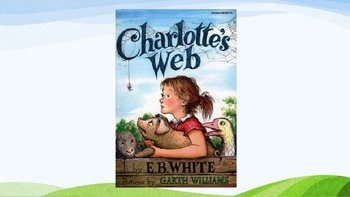Charlotte's Web Novel Study Vocabulary Visuals (for ELLs)
- PPT
What educators are saying
Description
This is an exhaustive 137 slide Power Point with vocabulary visuals for the book Charlotte's Web by E. B. White. I made this to provide visual vocabulary support for English Language Learners in my classroom. I preview it before reading or assigning chapter reading to increase comprehensible input (a SIOP strategy).
For most words, I provide two different visuals so that ELLs don't latch onto the wrong meaning. Most words also include a simple, short definition. The words consist mainly of tier 2 and tier 3 vocabulary.
The powerpoint is divided into three chapter chunks (Ch 1-3, 4-6, etc.).
This Power Point can stand alone, but also was designed to accompany The Book Umbrella's Charlotte's Web Novel Study. This includes all of the vocabulary study words from The Book Umbrella's novel study, in addition to many more words.
I recommend gauging your students' level of need for visual support and then deleting slides as you see fit. I teach a class of 4th graders that is almost exclusively ELLs, so I added more words, though we only focus on 2 words per chapter for intensive vocabulary study.





